Let’s dive into the wild wonders of America with this listicle showcasing some extraordinary animals that are found only in the U.S. These incredible creatures not only highlight the diversity of wildlife but also the uniqueness of their adaptations and habitats.
1. The All-American Alligator Lives Large in the Southeast
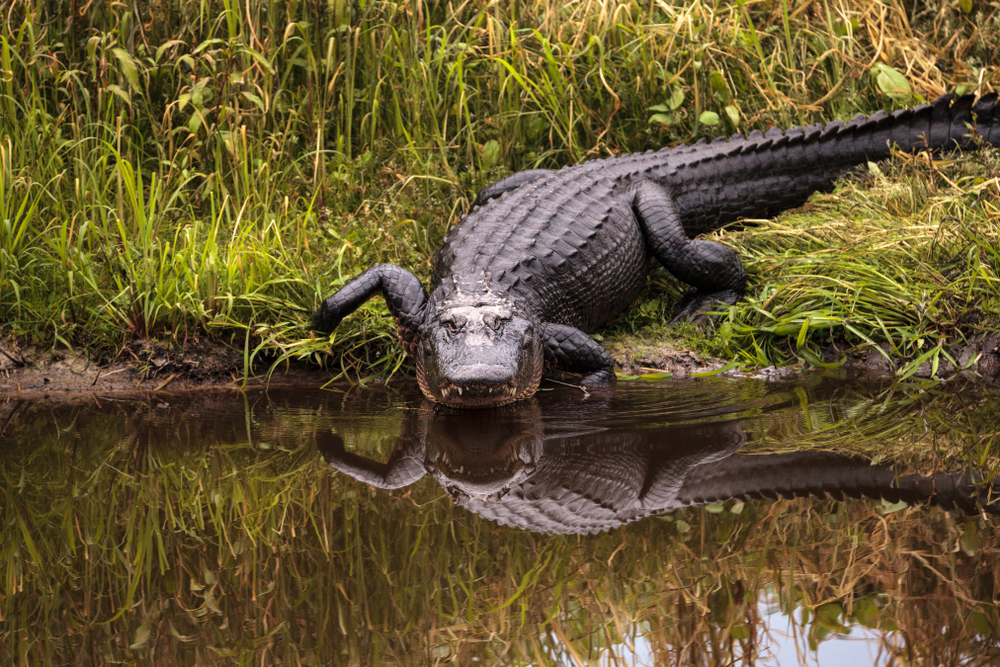
Ah, the American alligator—a creature that’s practically a celebrity in the swamps of the Southeastern United States. These toothy reptiles are found nowhere else in the world, making them a true American icon. With a lineage tracing back to the time of dinosaurs, alligators are a window into a prehistoric world. They thrive in freshwater environments like ponds, marshes, and rivers where they create “gator holes” that help sustain other wildlife during dry spells. Their survival story is a testament to conservation efforts; once endangered, their populations have rebounded due to strict protections and habitat management.
But what makes them truly special? It’s their remarkable adaptability and ecological significance. Alligators play a key role as apex predators, controlling prey populations and maintaining a balanced ecosystem. They’re also ecosystem engineers, shaping their habitats in ways that benefit countless other species. Plus, let’s be honest, nothing screams “Southern wildlife experience” quite like spotting one of these majestic beasts sunning itself on a riverbank. Whether you’re fascinated or terrified, the American alligator is undeniably one of the wild wonders of the U.S.
2. The Majestic Bald Eagle: America’s National Icon
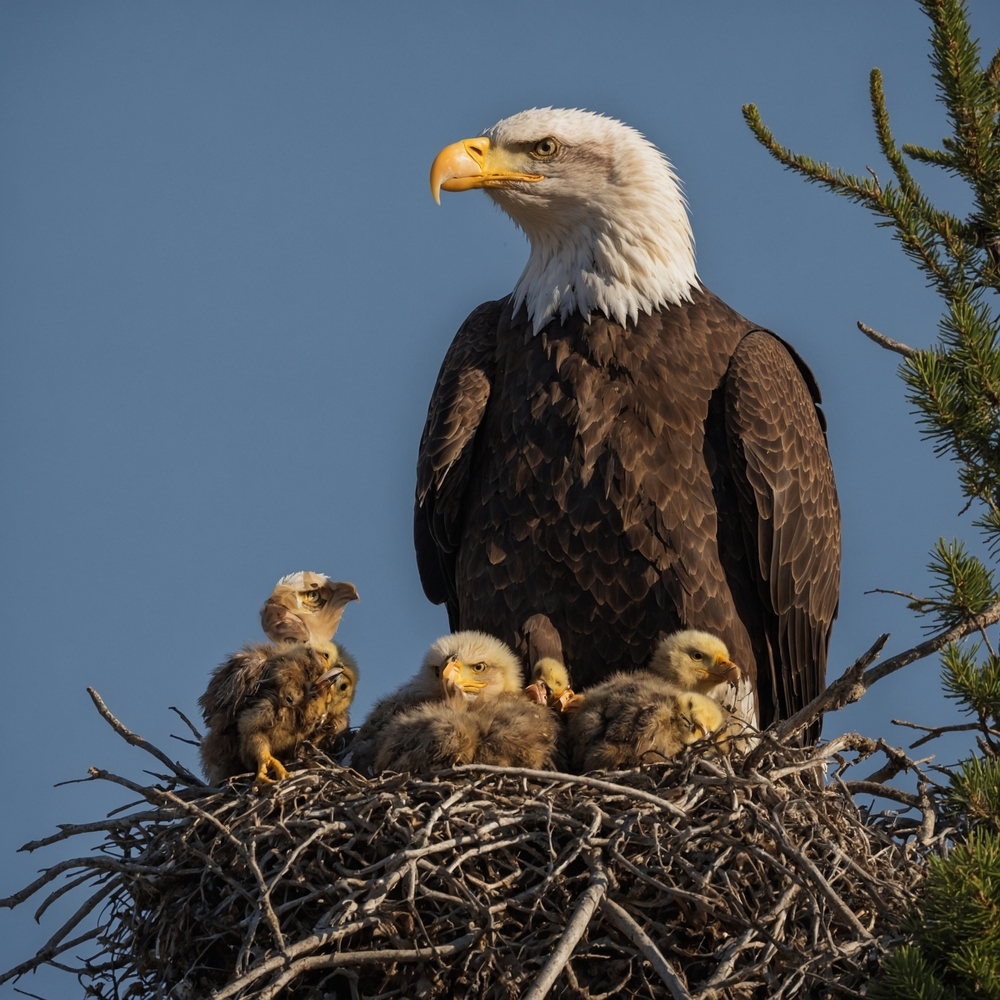
The bald eagle isn’t just the emblem of freedom; it’s a conservation success story that inspires wildlife enthusiasts across the nation. Found exclusively in North America, this stately bird is a true symbol of America, gracing everything from the country’s Great Seal to various coins and stamps. Once nearly driven to extinction by hunting, habitat loss, and pesticide use, bald eagles have made a phenomenal comeback. Thanks to conservation efforts and legal protections, their numbers have soared, and they can now be spotted across a wide range of habitats, from coastal areas to river valleys and mountain regions. According to the American Bird Conservancy, the bald eagle’s recovery is one of the greatest success stories in our nation’s history, highlighting the effectiveness of conservation efforts.
What makes the bald eagle so special? Apart from their striking appearance with a white head contrasting a dark brown body, they have incredible aerial hunting skills. Their massive wingspan allows them to soar effortlessly in search of fish, their primary diet, making them masters of the skies. Watching a bald eagle in flight is a breathtaking experience, embodying power and grace. It’s no wonder that this majestic bird has captured the hearts of so many and become a living symbol of America’s natural heritage.
3. The Secretive Florida Panther Prowls the Sunshine State
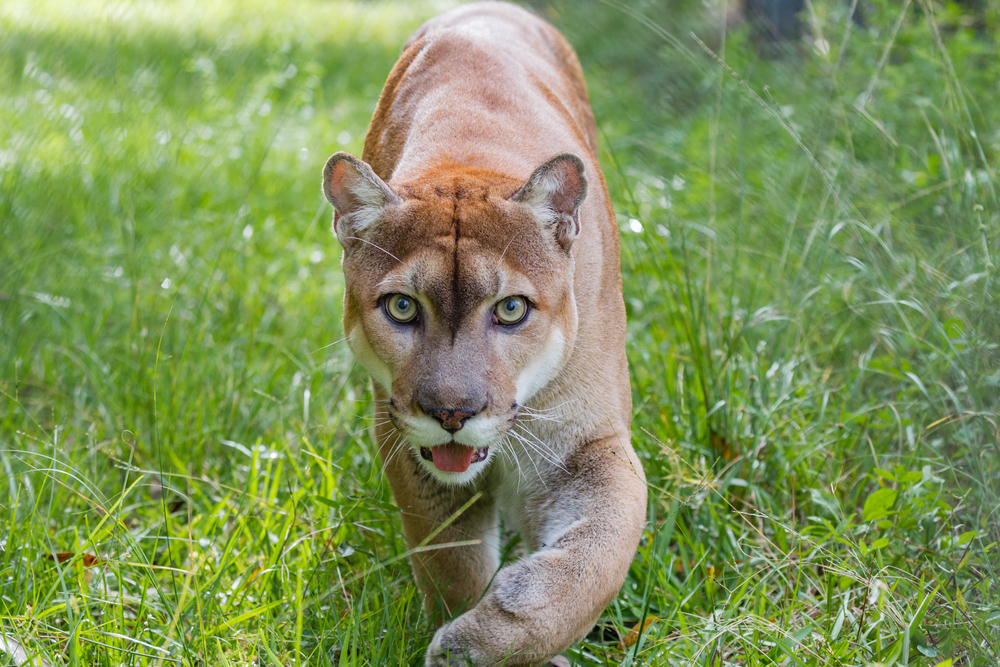
If you’re lucky enough to catch a glimpse of the elusive Florida panther, consider yourself part of an exclusive club. These rare cats are the only pumas found east of the Mississippi River and are a subspecies of the cougar. Living mostly in the swamplands of Florida, they are experts at navigating dense forests and marshes that provide them with cover and prey. Sadly, Florida panthers are critically endangered, with only a few hundred individuals remaining. Conservationists are working tirelessly to protect their habitats and create wildlife corridors that allow safe passage between territories. As reported by the U.S. Fish & Wildlife Service, the Florida panther population has rebounded from an estimated low of 10 animals to over 200 since it was listed as endangered in 1967.
Why are Florida panthers so special? Their survival story is a testament to resilience in the face of adversity. These big cats play a crucial role in their ecosystem as apex predators, helping to control deer and wild hog populations, which in turn maintains the health of vegetation. Their existence highlights the importance of biodiversity and the need for human efforts to coexist with wildlife. Each sighting of a Florida panther serves as a reminder of nature’s wonders and the ongoing challenge of preserving it for future generations.
4. The Colorful California Condor Soars Again
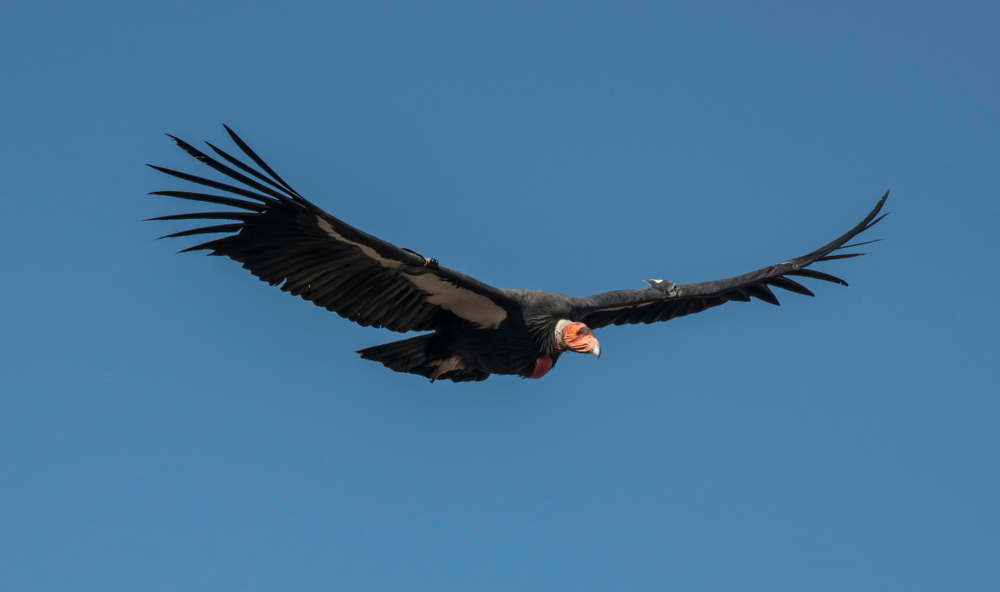
It’s hard to miss the stunning California condor when it’s flying overhead—mostly because it has one of the largest wingspans of any North American bird. Exclusively found in the southwestern United States, these birds were once on the brink of extinction. In the 1980s, fewer than 30 condors remained, prompting conservationists to launch a captive breeding program that has since helped their population rebound to a few hundred individuals. These scavengers play a vital role in the ecosystem by helping to break down carcasses and prevent the spread of disease.
But why should we care about the California condor? These birds are living examples of how collaborative conservation efforts can bring a species back from the brink of extinction. Their ability to glide for miles using thermal air currents is nothing short of awe-inspiring. Watching a California condor soar is like watching a flying relic of a bygone era, a bird that once shared the skies with mammoths and saber-toothed cats. Their story of survival is an inspirational reminder of what can be achieved when humans come together to protect the planet’s precious wildlife.
5. The Furry Fisher Cat: Predator of the Northern Woods
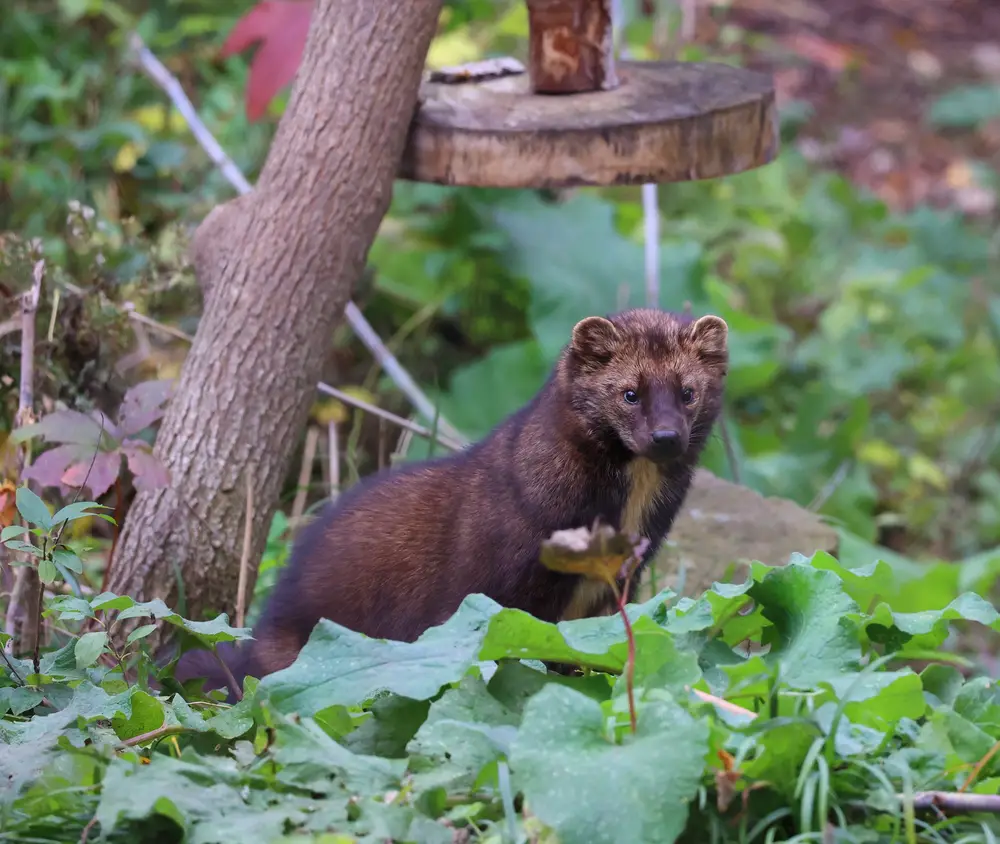
Often mistaken for a house cat on steroids, the fisher cat is anything but your average feline. Found in the dense forested regions of Northern America, particularly in the northeastern U.S., these agile predators have adapted perfectly to their woodland habitat. They’re skilled climbers and have a varied diet that includes everything from small mammals to birds and even porcupines. Fisher cats are solitary creatures, making them a rare sight for even the most seasoned wildlife observers.
So, what’s the big deal about fisher cats? For starters, their unique adaptations make them exceptional hunters. They’re one of the few predators that can successfully tackle a porcupine, demonstrating their cunning and tenacity. Fishers have also become a symbol of healthy forest ecosystems, as they require large tracts of undisturbed land to thrive. Their presence indicates a well-balanced environment, making them an essential part of the American wilderness. If you ever have the chance to encounter one, consider it a privilege—these enigmatic creatures are a testament to nature’s ingenuity.
6. The Endearing Key Deer: Tiny Treasures of Florida
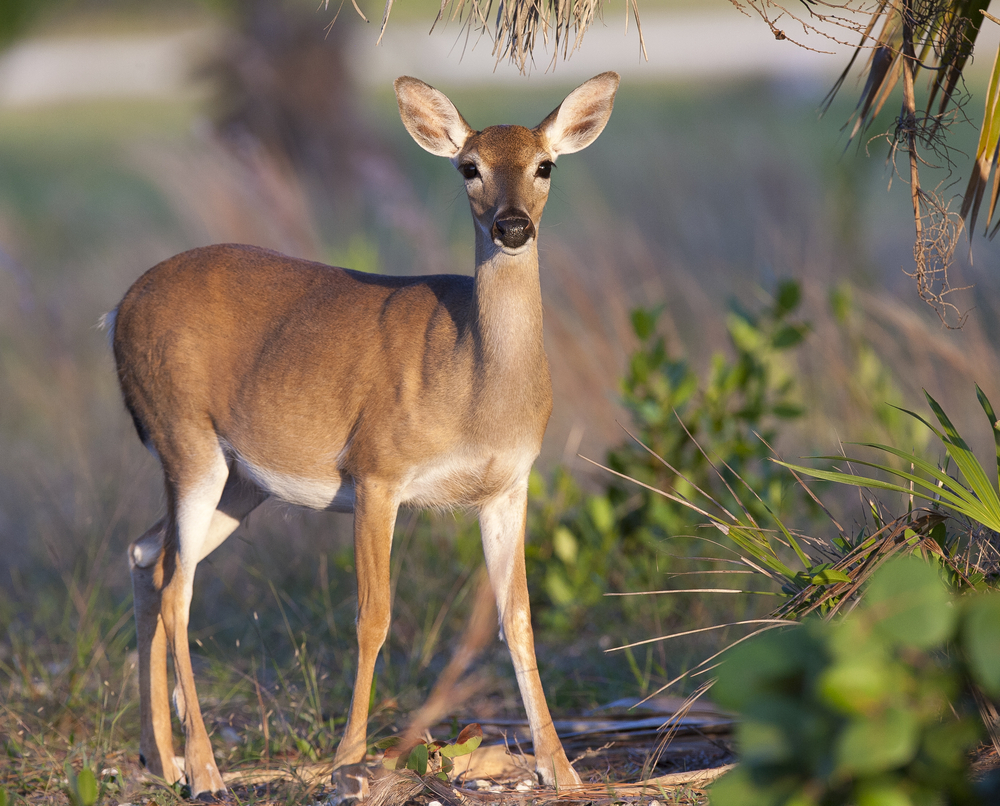
Imagine a deer the size of a large dog, and you have the adorable Key deer, found exclusively in the Florida Keys. These tiny deer are the smallest subspecies of the North American white-tailed deer and are a beloved icon of the islands. Unfortunately, they’re also endangered, facing threats from habitat loss, vehicle collisions, and climate change. Conservation efforts are focused on preserving their unique habitats and educating the public about the importance of protecting these charming creatures.
What makes Key deer so special? Beyond their cute and diminutive appearance, they are an important part of the Keys’ ecosystem. They help control vegetation and provide a source of food for native predators. Their existence highlights the rich biodiversity of the Florida Keys and the complex interactions between species in this fragile environment. Observing a Key deer in its natural habitat is a magical experience that underscores the need to protect even the smallest members of our wildlife community.
7. The Elusive Red Wolf: A Southern Ghost
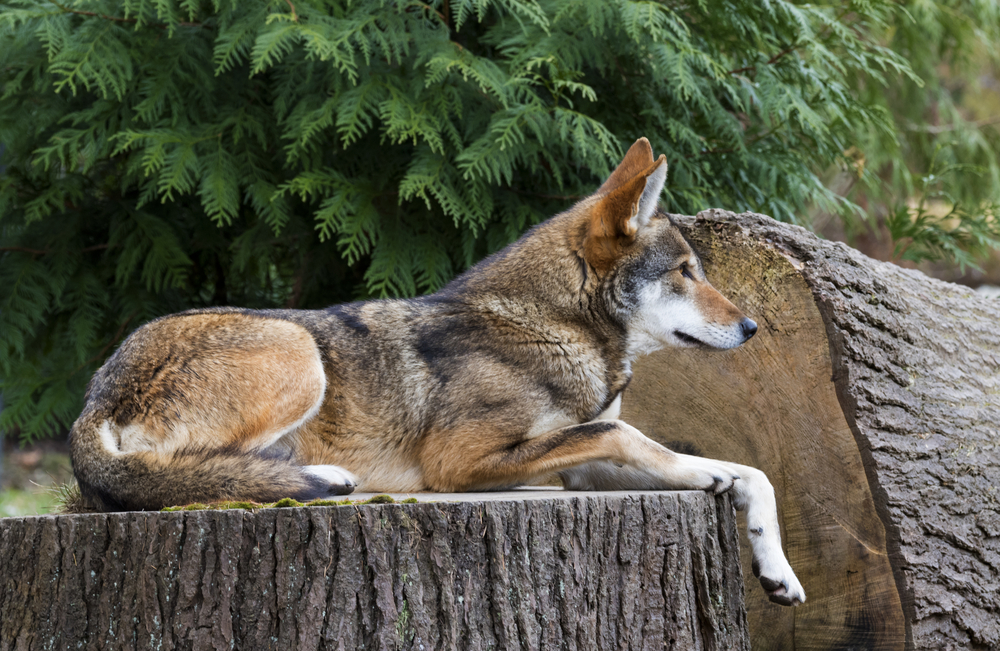
Fluttering through the eastern forests like a ghost, the red wolf is one of the most endangered canids in the world. Native to the southeastern United States, these wolves were once widespread but now exist only in a small reintroduced population in North Carolina. Conservationists have been working tirelessly to reestablish their numbers through captive breeding and release programs. Despite these efforts, red wolves face numerous challenges, including habitat loss and hybridization with coyotes.
Why are red wolves so incredible? Apart from their striking appearance with a reddish coat and slender build, they play a vital role in their ecosystem as apex predators. Their presence helps maintain balanced prey populations and supports biodiversity. The red wolf’s story is one of both hope and caution, illustrating the urgent need for continued conservation efforts. Observing these rare creatures in the wild is a humbling reminder of the fragility of nature and the importance of safeguarding it for future generations.
8. The Unique Hellbender Salamander: River Giants of the East
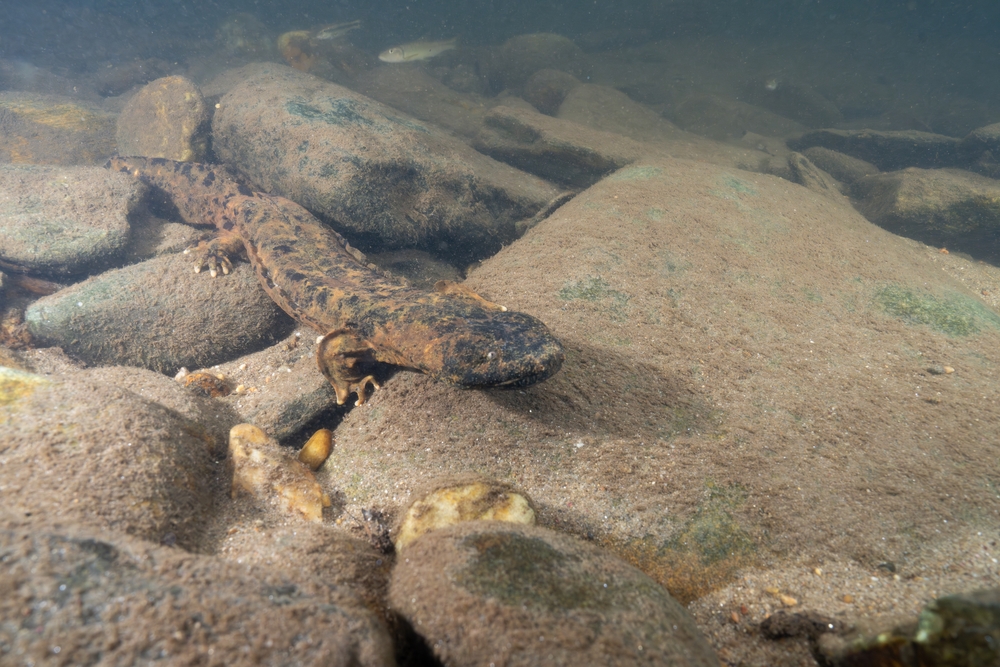
Imagine a salamander the size of a small dog lurking in the cool, fast-flowing rivers of the eastern United States. Meet the hellbender, North America’s largest salamander and a true aquatic wonder. These bizarre-looking creatures, often referred to as “snot otters” or “lasagna lizards” due to their wrinkled skin, play a vital role in freshwater ecosystems by helping to control fish and invertebrate populations. Yet, despite their importance, hellbenders face threats from habitat degradation, pollution, and climate change.
So, why should you care about the hellbender? For starters, their presence indicates a healthy and clean river system, as they require pristine water conditions to thrive. They are also a living link to the distant past, having existed relatively unchanged for millions of years. Their conservation highlights the importance of preserving freshwater ecosystems and the myriad species that depend on them. Spotting a hellbender in its natural habitat is akin to finding a hidden treasure and emphasizes the beauty and diversity of America’s wildlife.
9. The Desert Dwelling Gila Monster: A Reptilian Relic
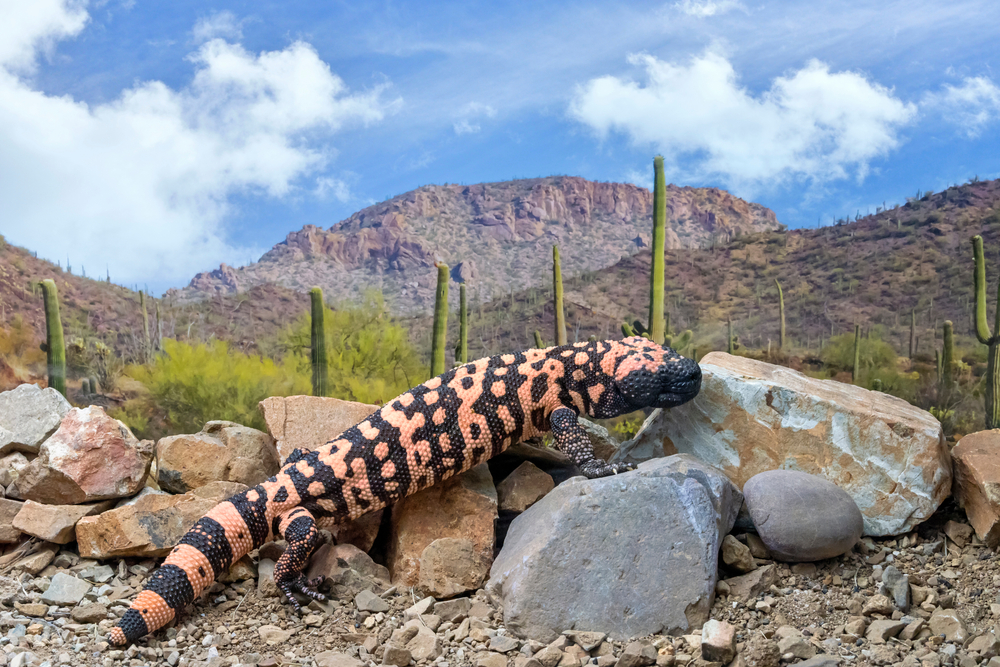
When you think of venomous creatures, a lizard might not be the first thing that comes to mind, but the Gila monster is here to change that. Found only in the arid deserts of the southwestern United States, this brightly colored reptile is one of the few venomous lizards in the world. Known for its distinctive beaded skin and striking patterns, the Gila monster is a master of desert survival, spending much of its time underground to escape the scorching heat.
What’s so special about the Gila monster? Besides its venom, which is used primarily for defense rather than hunting, it’s an indicator of a healthy desert ecosystem. This lizard plays a crucial role in controlling small mammal populations and is a symbol of the unique adaptations required to thrive in harsh environments. Its existence speaks to the resilience of life in one of the most challenging habitats on Earth. Observing a Gila monster in the wild is a thrilling reminder of nature’s incredible diversity and the fascinating creatures that call it home.
10. The Rare Black-Footed Ferret: Prairie Guardians
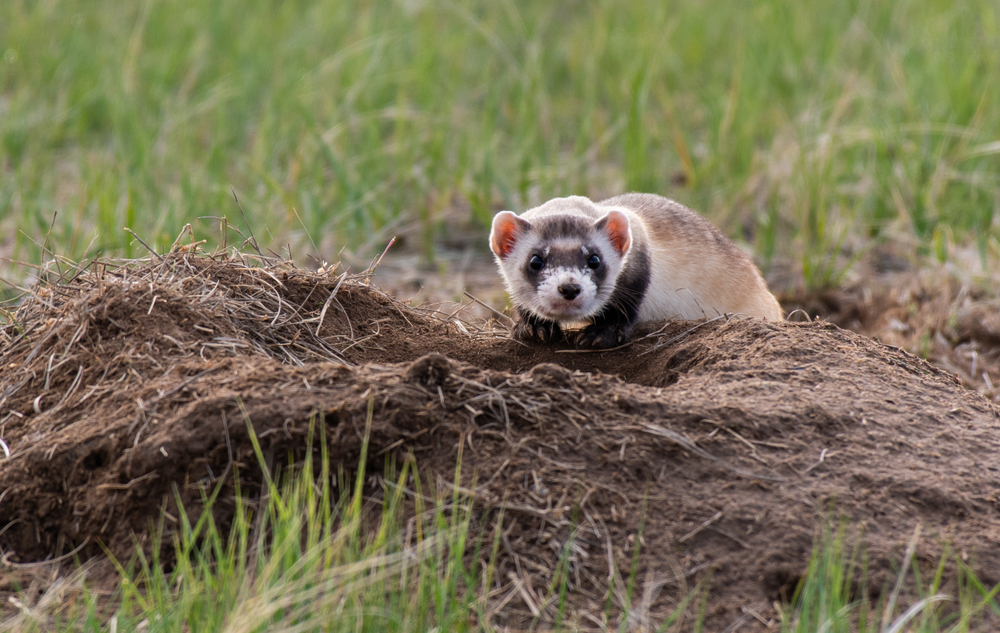
Once thought extinct, the black-footed ferret is a remarkable example of a species brought back from the brink. Native to the Great Plains of North America, these elusive creatures are one of the few carnivores that rely almost exclusively on prairie dogs for food and habitat. Efforts to reintroduce them into their native range have been ongoing, with captive breeding programs playing a crucial role in their recovery. Despite these efforts, black-footed ferrets remain one of the most endangered mammals on the continent.
Why are black-footed ferrets so essential? They play a critical role in maintaining the health of prairie ecosystems by controlling prairie dog populations and providing prey for larger predators. Their story highlights the complex interplay between species and the importance of preserving habitat for all wildlife. The sight of a black-footed ferret peeking out of a burrow is a testament to the success of conservation efforts and the potential for recovery when humans and nature work together. These charming creatures serve as ambassadors for the prairie and the incredible biodiversity it supports.
11. The Tiny But Mighty Pika of the Rockies

Meet the pika, a small, furry mammal that thrives in the rocky alpine regions of the western United States. Often described as resembling a cross between a rabbit and a hamster, pikas are known for their distinctive “barking” calls and energetic behavior. These adorable creatures spend their days collecting and storing food for the harsh winter months, showcasing their remarkable adaptation to high-altitude environments. However, pikas are especially vulnerable to climate change, as rising temperatures threaten their cool, mountainous habitats.
What makes pikas so special? Their presence indicates a healthy alpine ecosystem, and they play a critical role in nutrient cycling by dispersing plant material across the landscape. These industrious animals are also a vital food source for various predators, supporting the complex web of life in their rugged habitats. Watching a pika dart across the rocks is a delightful reminder of nature’s resilience and the intricate balance that sustains it. Their story underscores the urgent need to protect fragile ecosystems from the impacts of climate change and preserve the wonders of our natural world.
12. The Striking Pronghorn: Speedsters of the Plains
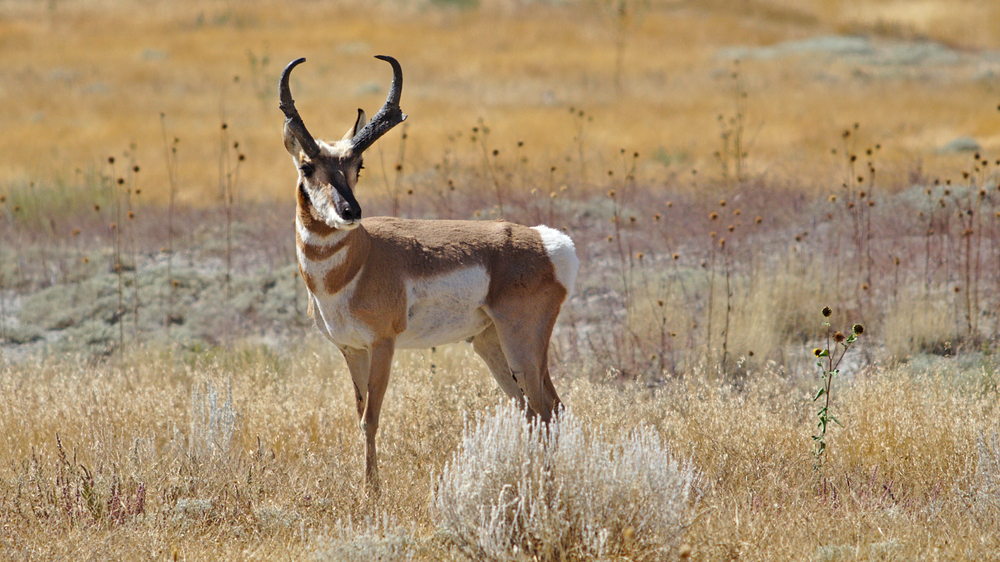
With their distinctive horns and blazing speed, pronghorns are a defining feature of the American plains. Often mistaken for antelopes, these unique animals are actually a separate species found only in North America. Pronghorns are famous for their incredible running abilities, reaching speeds of up to 60 miles per hour to evade predators. They roam the grasslands and deserts of the Western U.S., playing a crucial role in maintaining prairie ecosystems.
What’s so fascinating about pronghorns? Besides their speed, which makes them the fastest land mammals in the Western Hemisphere, they have fascinating adaptations like keen vision and efficient respiratory systems. Their migration patterns are among the longest of any terrestrial animal in North America, highlighting the importance of preserving vast landscapes for their survival. Observing a herd of pronghorns racing across the plains is a breathtaking experience that captures the essence of America’s wild heart. These majestic creatures are a testament to the beauty and power of nature’s designs.
13. The Coy Coyote: Survivalists of the Suburbs
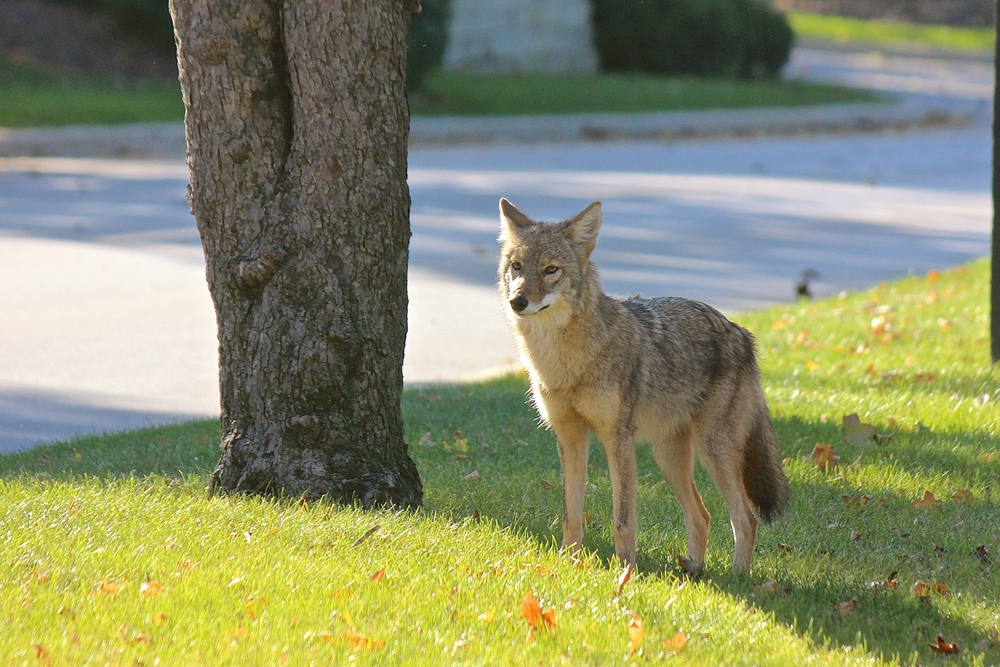
Whether you hear their haunting howls in the desert or see them trotting through suburban neighborhoods, coyotes are everywhere—a testament to their incredible adaptability. Native to North America, these intelligent canines have expanded their range across the continent, thriving in diverse habitats from urban areas to remote wilderness. Known for their cunning and resourcefulness, coyotes are often misunderstood but play a vital role in controlling rodent populations and maintaining ecosystem balance.
What makes coyotes so intriguing? Their survival skills are legendary, allowing them to coexist with humans in challenging environments. They are skilled hunters, using various tactics to capture prey, and are known for their complex social structures and vocalizations. Observing a coyote in its natural habitat reveals a creature that embodies the spirit of resilience and adaptability. Coyotes remind us of the interconnectedness of all life and the importance of finding harmony between human and natural worlds.
14. The Shy Kit Fox: Desert Dwellers of the Southwest
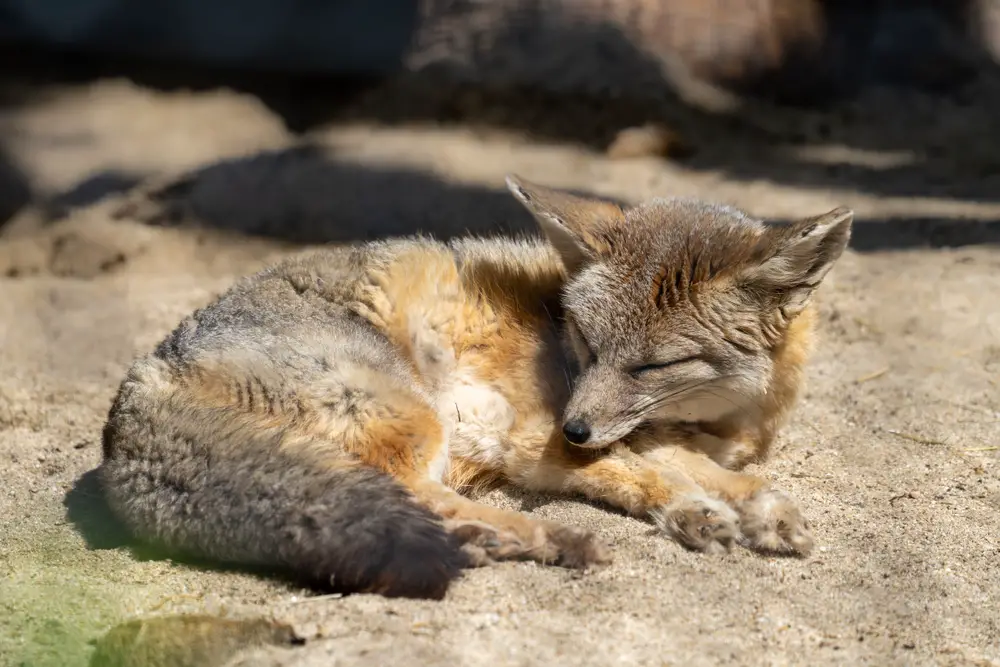
Living in the arid regions of the southwestern United States, the kit fox is a master of desert survival. These petite canines are known for their large ears, which help dissipate heat and locate prey underground. Kit foxes are nocturnal, spending the hot days in burrows and emerging at night to hunt for small mammals and insects. Despite their adaptability, they face threats from habitat loss and human encroachment.
Why are kit foxes so special? They are indicators of a healthy desert ecosystem, showcasing the unique adaptations required to thrive in harsh environments. Kit foxes are also a species of conservation concern, highlighting the need to protect and preserve delicate desert habitats. Spotting a kit fox in the wild is a rare and captivating experience that underscores the beauty and diversity of America’s wildlife. These elusive creatures remind us of the importance of safeguarding their fragile homes for future generations.
15. The Endemic Hawaiian Monk Seal: Treasures of the Pacific
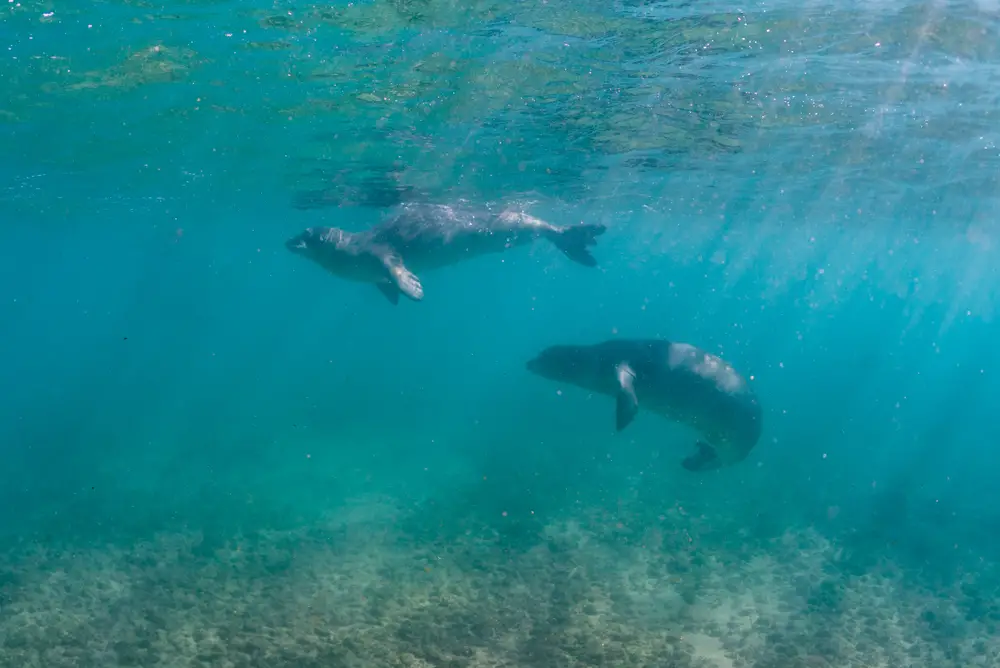
Nestled in the warm waters of the Hawaiian Islands, the Hawaiian monk seal is a rare marine mammal found nowhere else on Earth. These seals are a living connection to Hawaii’s rich natural heritage, with a lineage that dates back millions of years. Unfortunately, they are critically endangered, facing threats from entanglement in fishing gear, habitat loss, and disease. Conservation efforts are focused on protecting their habitats and reducing human impacts to ensure their survival.
What makes Hawaiian monk seals so unique? Beyond their charming appearance, they play a crucial role in marine ecosystems by helping to regulate fish populations. Their presence also highlights the rich biodiversity of Hawaii’s waters and the interconnectedness of ocean life. Observing a Hawaiian monk seal lounging on a pristine beach or gracefully swimming in the clear waters is a reminder of nature’s wonders and the need to protect them. These seals are ambassadors for the ocean’s beauty and a call to action for preserving the treasures of the Pacific.
